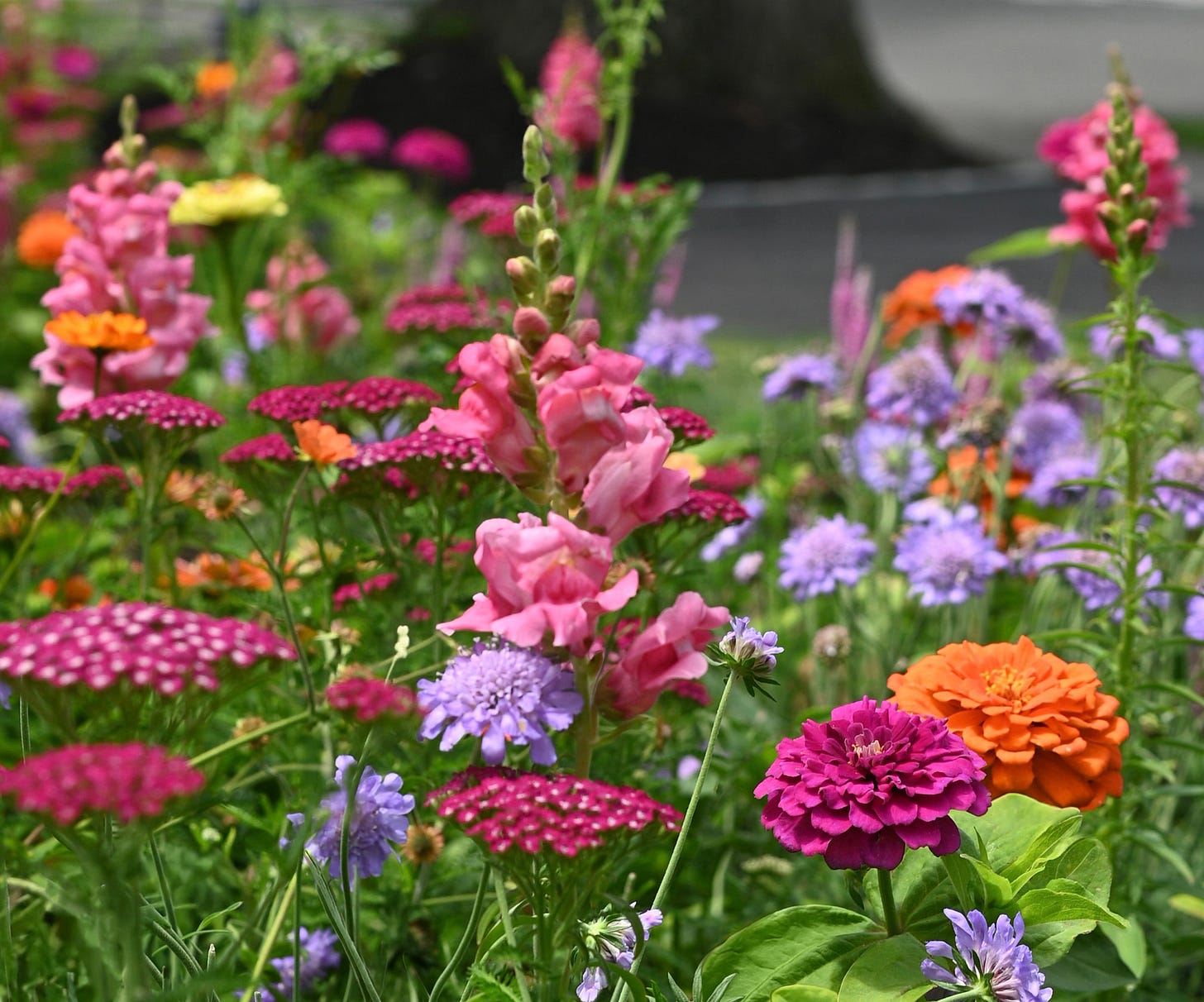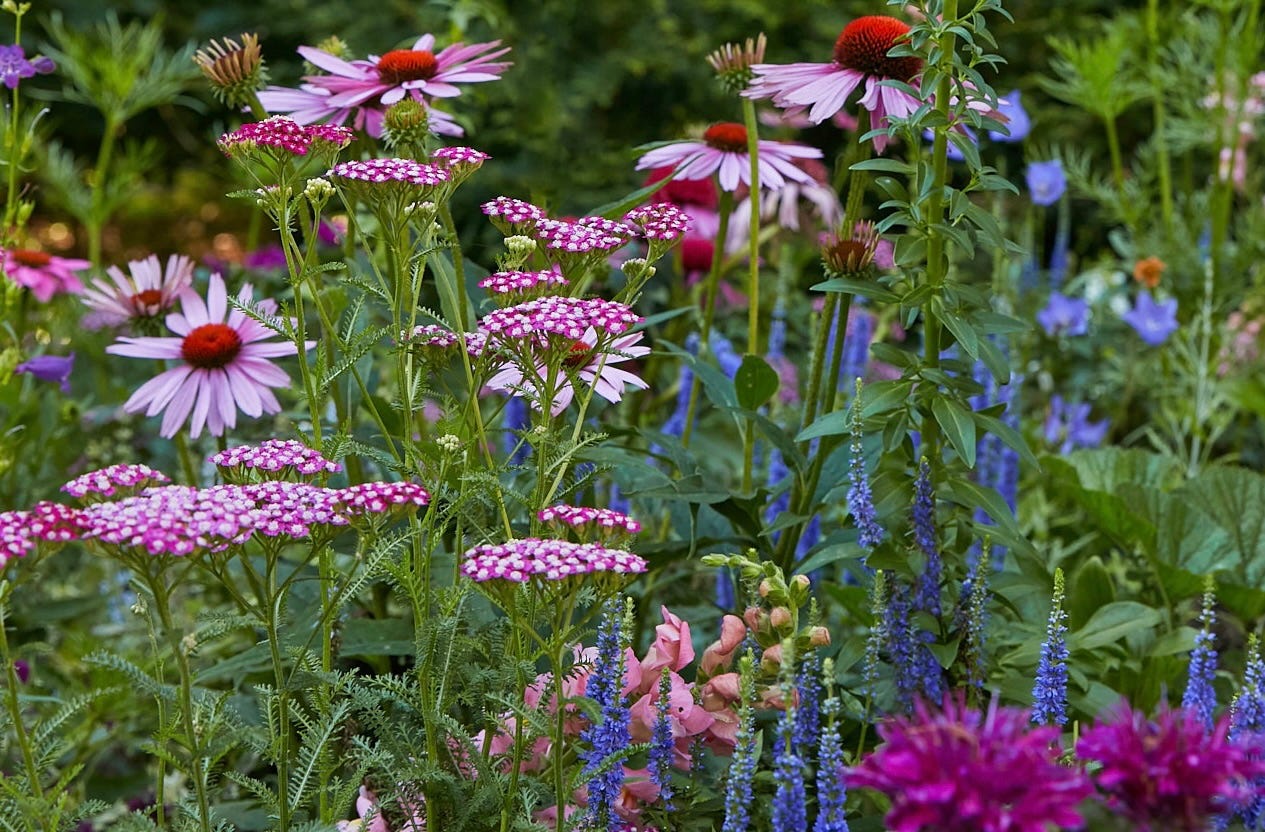“The garden suggests there might be a place where we can meet nature halfway.”
— Michael Pollan
Whenever I get an inquiry about our garden services, I like to start with a call to get a sense of what the client is looking for, explain what The Inspired Garden is all about, and see if we're a good fit. Many of these conversations go like this:
Me: So, what are you envisioning for your garden?
Potential Client: I want pops of color in my garden, but I only want native plants.
Me: Ok. Can I ask, do you want native plants because you’re specifically looking for plants that have always been native to our area, or are you wanting plants that attract pollinators, are easy to take care of, and thrive in our environment? For example, catmint does extremely well in our zone, is very low-maintenance and in fact is NOT native to anywhere in the United States.
Potential Client: Oooooh, I see! That’s fine if it’s not native as long as it’s easy to care for and makes my garden beautiful.
The native plant movement has some incredible PR people, and they've done an amazing job promoting the idea that native equals good and non-native equals bad. These days, it’s trendy to say you only plant with natives and to associate “non-native” with invasive. There’s even a bit of shaming going on when someone dares to plant a snapdragon.
But here’s the thing: we’re missing the bigger picture by lumping plants into two categories—native and non-native—and attaching moral labels to them. Instead, I’d argue that there are three categories we should consider:
Native Plants: This is a loosely defined category because the term “native” can be a bit subjective. When does a plant officially become native? People can and do disagree.
Bad Plants: These plants are invasive, damaging to local ecosystems, and harmful to wildlife.
Good Plants: These work well in the garden whether they’re native or not. They support pollinators, are sustainable, and aren’t invasive.
Let me be clear: I’m not advocating for planting invasive species or anything harmful to the environment. And if you want a garden with only native plants, that’s totally fine! But it’s time to move past the idea that non-native automatically means “bad.” After all, some native plants can be very aggressive—like black-eyed susans!
If your goal is to create a sustainable, environmentally friendly garden that’s also beautiful, incorporating a mix of plants from different regions can actually be beneficial . Here’s why:
Extended Bloom Times: A diverse mix of plants means your garden can stay in bloom longer, which benefits pollinators.
Increased Biodiversity: Mixing native and non-native plants can attract a wider variety of pollinators and other beneficial creatures.
Disease Resistance: Sometimes, non-native plants are less susceptible to local pests and diseases, which can make them easier to care for.
Climate Change Adaptation: As our climate changes, some native plants may struggle, and non-native species can step in to fill those gaps.
Soil Improvement: In some cases, non-native plants are excellent at repairing degraded soils and can help set the stage for ecological recovery in a disturbed environment.
Gardening is about creating beauty, supporting life, and nurturing a connection with nature. By embracing both native and non-native plants that contribute positively to our environment, we can create spaces that are good for us AND good for the earth.
Peace on Earth,
Laura Janney
Resources for further reading:
Gardening with 'native' plants isn't always better for the environment | New Scientist
Native Versus Non-native: Which Plants are Best for Biodiversity? – The Nature of Cities
Are Non-Native Species Always Bad?
Is planting Non-Natives that are Non-Inv asives OK? – bare-soaps
Looking for more garden design inspiration? Check out our all-online, go-at-your-own-pace course: Designing Luxurious Gardens and Containers: The Inspired Garden Masterclass. With new garden and container designs dropping each season, we can help you achieve the garden of your dreams in 2025 and beyond. Join us today and learn how to design like the pros!





Great points. We tend to look for what is right or wrong. Good or bad. ❤️